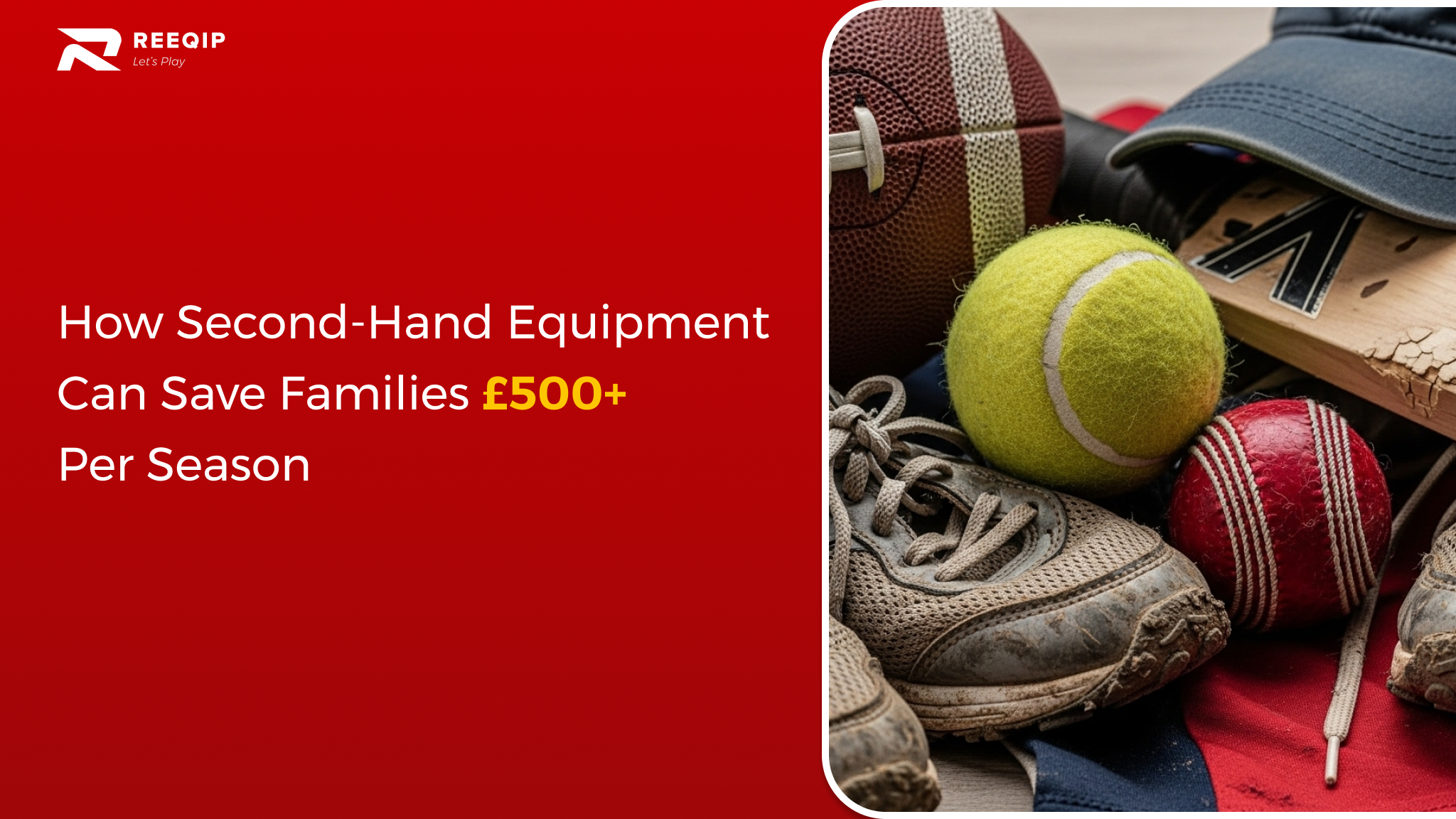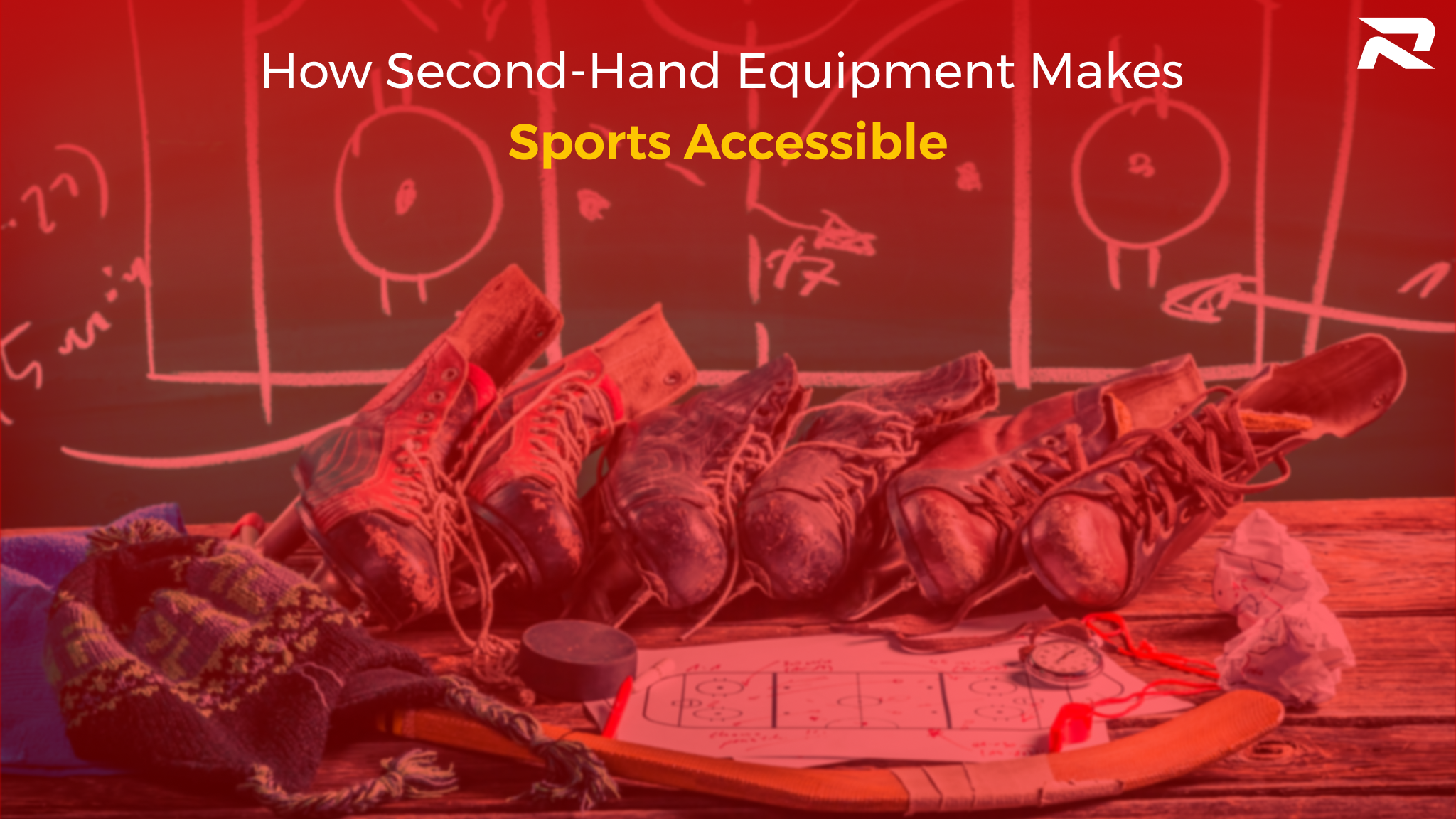The True Cost of Youth Sports: How Second-Hand Equipment Can Save Families £500+ Per Season
It starts with a spark. Maybe your child watches a football match and dreams of scoring the winning goal. Perhaps they see the gymnastics at the Olympics and are mesmerised. That initial excitement is priceless. But what comes next—the kit, the fees, the gear—has a very real, and often shocking, price tag.
For many families across the UK, that spark is being extinguished by a simple, brutal reality: the cost of youth sports is just too high.
If you’ve ever found yourself adding up the costs of getting your child into a new sport, you’re not alone. The numbers quickly spiral. A decent pair of football boots: £50-£80. The official club kit: another £70. Shin pads, goalkeeper gloves, a bag. Then come the weekly training fees, the match day contributions, and the petrol for getting to and from often out-of-town facilities. Before a child even kicks a ball, a family can easily be looking at an outlay of several hundred pounds.
This isn’t just about one sport. The same story plays out for hockey, rugby, tennis, and gymnastics. The financial barrier is real, and it’s having a devastating effect. According to a Sport England Cost of Living report, a significant number of families are being forced to make difficult decisions, with many altering or completely stopping their children’s participation in sports due to relentless financial pressures.
The human impact behind this statistic is immense. It means children are missing out on the joy of being part of a team, the mental and physical health benefits of regular activity, and the life lessons that sports teach. It’s a quiet crisis happening on sidelines across the country.
How Families are Finding a Way Forward
In the face of this, parents are getting resourceful. If you look online, in community Facebook groups and parenting forums, you will find countless stories of families sharing tips and solutions. One of the most common threads? The power of second-hand.
Parents are sharing how they’ve kitted their children out almost entirely with pre-loved gear. By buying a pair of barely-used boots for £15 instead of £70, or a quality winter sports jacket from a nearly-new sale, they are routinely saving themselves £200 to £300 in a single season. That’s not loose change; that’s a major financial pressure lifted.
This money isn’t just saved; it’s redirected. That £300 can cover a season’s worth of membership fees, a term of coaching, or the cost of travel to away games. It can be the difference between a child playing a season and sitting it out.
The Bigger Picture: A National Problem
When you zoom out, the scale of the spending is staggering. Various analyses suggest that the average UK family can spend between £500 and £1000 per year per child on sports equipment and associated costs alone. For a family with two or three children, this figure becomes impossible.
This financial wall is what keeps an estimated 2.8 million children in the UK from participating in the sports they love. Think about that number. It’s not just a statistic; it’s millions of children denied the chance to play, to be healthy, and to belong to a community.
A Simple, Smart Solution
So, what’s the answer? While long-term policy changes are needed, families need help right now. The solution isn’t a mystery; it’s already happening in community groups every day. It’s about changing our mindset around second-hand sports equipment.
Buying pre-loved isn’t a compromise. It’s a smart, practical, and powerful way to break down the financial barriers to sport. Here’s how to do it effectively:
1. Start with the Basics: You don’t need a full brand-new kit on day one. Focus on the essential, safety-critical items first. Things like a well-fitting helmet for cycling or cricket are worth investing in. For everything else, look for quality second-hand options.
2. Know Where to Look: Scout local charity shops, especially in more affluent areas where high-quality kit is often donated. Join local Facebook Marketplace groups and specific “ nearly new kids stuff” groups in your town. These are goldmines for sports gear.
3. Check it Thoroughly: When you buy second-hand, give it a careful look. Check the soles of boots for wear, look for cracks in plastic helmets, and ensure zips and seams on clothing are intact. Good quality gear lasts.
4. Sell What You Outgrow: Children grow fast. That pair of football boots that fit perfectly in September will be too small by spring. Sell them on! Use the money you make to fund the next size up, creating a circular economy that benefits everyone.
Every Child Deserves to Play
The goal is simple: to ensure that a child’s opportunity in sport is determined by their passion, not their parents’ postcode or pay cheque. The spark of interest should be enough to get them started.
By choosing second-hand, we’re not just saving money. We’re voting for a more inclusive, less wasteful, and more practical way for our children to play. We’re ensuring that the final whistle isn’t blown on a dream before the game has even begun.
We can give every child the chance to step onto the pitch, court, or track. All it takes is a different way of thinking about what they wear when they do it.








